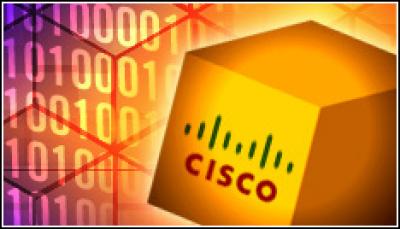Cisco Systems has introduced several new network-oriented hardware and software tools for its storage area network product line, that dovetail with the company’s Unified Computing System development effort.
With these new tools, IT and network managers can direct data traffic using any protocol from any node to any device within a Cisco fabric.
“Cisco is leveraging what they know about the WAN optimisation space into the network storage space,” Bob Laliberte, a senior analyst at Enterprise Strategy Group who focuses on data centre infrastructure management, told eWEEK.
In one fell swoop, Cisco introduced a new Storage Services Node card, an I/O accelerator, a feature called Secure Erase, and a newly packaged Data Mobility Manager appliance. These are designed to attach to current storage networks in order to make them UCS-operable.
The Storage Services Node is a 16-port line card that enables Cisco’s MDS 9000 Fibre Channel storage switches to become a platform for directing storage services to any device in the fabric.
The SSN-16 can run as many as four storage protocol streams [FC, IOA, SME, SanTAP] at the same time, using up to – you guessed it – 16 Gigabit Ethernet ports.
FC indicates Fibre Channel; SANtap is a proprietary Cisco protocol that enables transparent insertion of appliance-based storage applications. SME is a Linux-based, open source server protocol; IOA signifies the standard Input/Output Adapter protocol.
The SSN-16 can run these four fabric-based SAN services, all used by Cisco in its routing and server products. The new card makes available network-based encryption of the data, I/O acceleration for faster backup and replication over a WAN, network extension using FCIP [Fibre Channel Internet Protocol] for connecting two or more fabrics over a WAN link, and secure data erasure.
“When all of these services are handled in single instances within the network, rather than in individual physical servers, suddenly the network becomes a unified fabric – combining the data flow for both storage and data transaction,” Cisco product manager Bob Nusbaum told eWEEK.
Fewer Applications, Better Traffic Flow
Using only one instance of encryption functionality in the network smooths out data storage traffic tremendously, Nusbaum said.
“The SAN fabric doesn’t care whether host servers are using iSCSI, FCoE or native Fibre Channel,” Nusbaum said. “The encryptor sees data as data from wherever it comes, does the encryption, and that’s it. You don’t need encryption on every server.”
Same thing with I/O optimisation and secure erasure of data, Nusbaum said.
“You might be surprised at how hard it is to truly delete data files, from servers, laptops and desktops and other devices,” Nusbaum said. “This is a very secure way to completely eradicate unwanted data.”
This is all part of Cisco’s bigger-picture data centre plan, a five-phase development effort called Services-Oriented SAN (SOS) which fits into the company’s overall Data Centre 3.0 strategy.
“Part of Cisco’s strategy here is that they’re saying, ‘Hey, we used to have a [separate] card to do all these capabilities, now we can put it all onto one,’ ” Laliberte of ESG said.
Cisco also said it is repackaging its Data Mobility Manager (DMM) data migration software as an appliance. The new DMM is a Cisco MDS 9222i intelligent fabric switch combined with a software license. The package allows data migrations to be performed while live traffic is flowing, which eliminates downtime during the process.
Nusbaum said the company is marketing the DMM appliance at VARs and systems integrators so they can provide enhanced Cisco migration services for their customers.
Cisco’s Network-Centric Approach
Cisco has never made any bones about its network-centric view of how data centres should be run.
“This is a really new platform for scaling storage services within a fabric [data centre system],” Nusbaum said.
“Going forward, using the network itself as a delivery platform will be the most cost-effective way to deploy services as fabrics grow. Virtualisation and unified fabrics are driving more traffic to the SAN. Network-based services help control virtual machine sprawl and ensure that SAN services won’t be a gating factor to the adoption of these technologies.”





